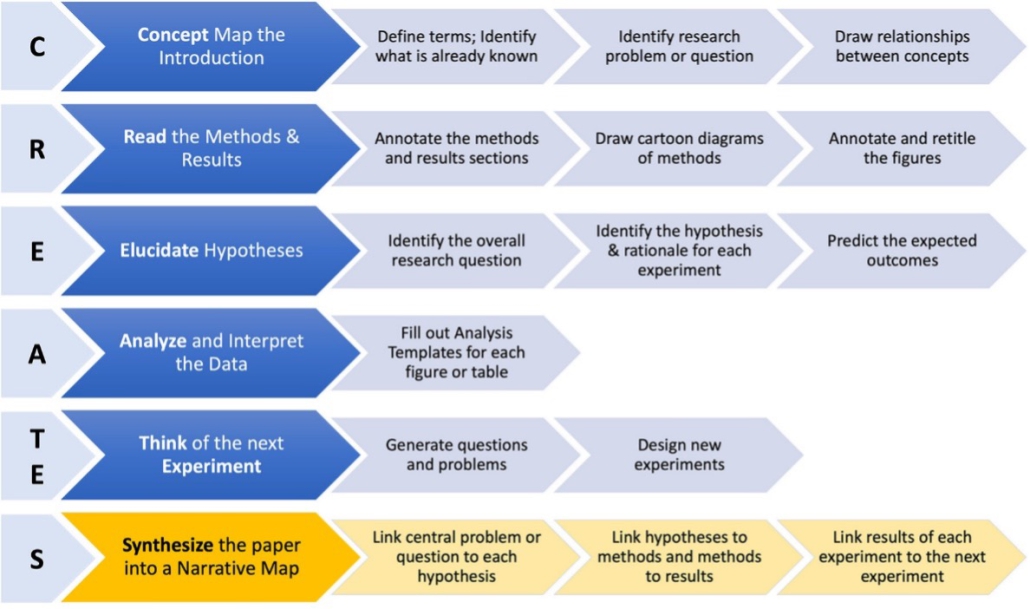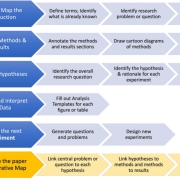Fostering Scientific Literacy Through Synthesis: the CREATE(S) Process
Researchers in the Center for Educational Assessment, in collaboration with colleagues at UCLA, Kaiser Permanente Bernard J. Tyson School of Medicine, and Arizona State University, published a new study in the Journal of Microbiology and Biology Education’s special edition on Scientific Literacy.
This study examined the impact of the CREATE(S) process (Concept map the introduction, Read methods and results, Elucidate hypotheses, Analyze data, Think of the next Experiment, and Synthesis map), on students’ scientific literacy skills, specifically their understanding of the process of science and their ability to use narrative synthesis to communicate science. Analyses revealed that CREATES intervention students versus the comparison group demonstrated improved ability to interpret and communicate primary literature, especially in the methods, hypotheses, and narrative synthesis learning outcome categories. Through a mixed-methods analysis of a reflection assignment completed by the CREATES intervention group, students reported the synthesis map as the most frequently used step in the process and highly valuable to their learning. Taken together, the study demonstrates how this modified CREATES process can foster scientific literacy development and how it could this scaffolded approach can be applied in other Journal Club settings.
Figure: The adapted CREATE(S) Process

Citation: Goodwin, E. C., Shapiro, C., Freise, A. C., Toven-Lindsey, B., & Moberg Parker, J. (2023). Synthesizing Research Narratives to Reveal the Big Picture: a CREATE (S) Intervention Modified for Journal Club Improves Undergraduate Science Literacy. Journal of Microbiology & Biology Education, e00055-23. https://journals.asm.org/doi/10.1128/jmbe.00055-23

